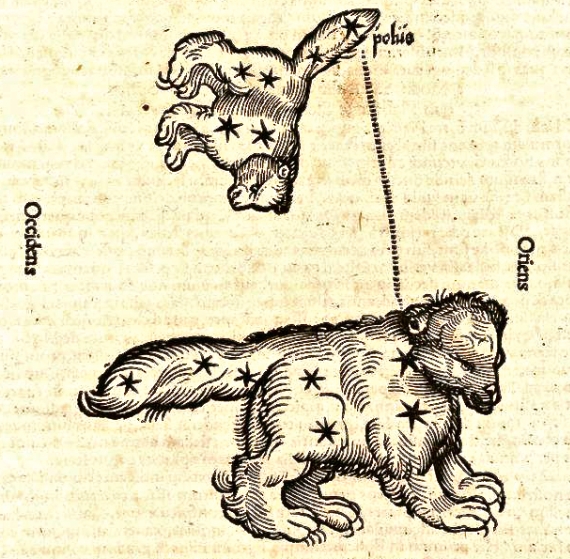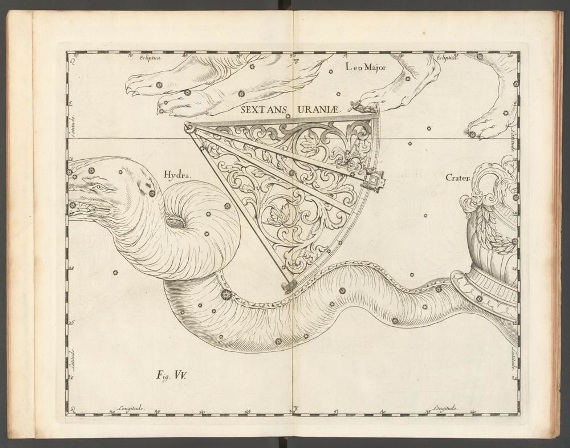We often forget what lies behind a name, i.e. its etymology. We astronomers are particularly prone to forgetting that constellations have their own story, which is usually connected with Greco-Roman culture, the Renaissance or the scientific and technical developments brought by the Enlightenment, with the southbound discoveries.
Constellations are groups of stars aligned by chance, with no physical relation with each other: they are not at the same distance and are not of the same age, except for some exceptions. Their only specificities are their angular proximity when they project on the plane of the sky, and their brightness, which makes they stand out. However, their peculiar shapes have aided navigation and marked the change of seasons, as each constellation can be easily recognized and seen at different times of the year.
The Greek poet Hesiod, who wrote “Works and Days” in the 8th century BCE, mentioned this often. For example, in Book 2 we can read:
«But when the Pleiades and Hyades and strong Orion begin to set, then remember to plough in season: and so the completed year will fitly pass beneath the earth.»
In fact, this is not the first Western classics reference to astronomy in literature. Both in “The Iliad” and “The Odyssey” Homer describes or assumes that the Earth is flat; that the Sun, the Moon and the stars circle around our planet; and that they rise in the East and set in the ocean to the West. And they probably return to their starting via the North, even though this curious movement is explicitly portrayed only in later representations. Homer also mentions the morning and evening stars and does not realize that they are the same planet, Venus. He also talks about the Pleiades and Hyades, two stellar associations, Orion and the constellations of Ursa Major and Boötes. Boötes includes the brightest star in the Boreal Hemisphere, Arcturus. The Ursa is remarkable because it never sets in the sea, and is very important to be able to find the North and navigate. It was essential for Odysseus and his return to Ithaca.
These two authors could have been contemporary (if Homer was real and the actual author of these and other less well-known texts) and if we compare them we find similarities and differences: they both mention the same celestial objects, which could mean that the other planets had not been identified as such by the 8th century BCE (or at least the archaic period, considering the uncertainty about dates). However, Hesiod is much more detailed and specific about how astronomic events mark dates and agricultural events; he clearly specifies the solstices and the lunar period, which he considers to be 30 days in length. The difference between these two authors stems from a basic fact: Homer wrote epic poems that praise the glories of warrior heroes, while Hesiod is more pragmatic and only talks about daily chores. This may be less appealing but it is fundamental for civilization. Hesiod is also said to have also written a poem called “Astronomy” of which there are only a few fragments left. But there have been questions about who the author was.

In the 3rd century BCE, the poet Aratus wrote «Phaenomena» and mentioned how the Greeks and Phoenicians used different constellations to determine the North: Ursa Major among the Greeks (Helice) and Ursa Minor among the Phoenicians (Cynosura in the poem). In the 6th century BCE, according to Callimachus, Thales of Miletus recommended that Ursa Minor should be used for navigation as it includes the true North Pole (or being closer to it since its position varies over time due to the “precession of the equinoxes” effect).
Shortly after, in “Catasterismi”, Eratosthenes – or probably a later author under his name – stated that both the Hyades and Pleiades are groups of sisters who experienced several adventures. These are, in fact, stellar associations with physical connections between their members: they were formed from the same cloud of dust and gas and their members could be called twins (they are the same age but different individual properties). Nevertheless, the stars in the constellation of Orion, which dominates the sky in the fall, are only related because they are projected in the same direction on the celestial sphere. Or at least we thought so until very recently.
The story behind the protagonist of a constellation is always interesting … This is called catasterism, a word extracted from Eratosthenes’ work: the transformation of a figure (in principle, mythological) into a star or constellation. Often it was due to the intervention of the Olimpean Gods in . However, Eratosthenes, in a remarkable courtly feat, placed queen Berenice II, the wife of Ptolemy III Euergetes of Egypt, a Hellenic pharaoh, in the sky. Specifically, he praised her hair’s beauty, which became the constellation of Coma Berenice. Or it may have been Conon of Samos who imagined that a lock from the queen’s hair was taken by a goddess as a sacrifice for the king’s return from the Third Syrian War. This kind of praise was repeated by later astronomers, perhaps in appreciation or probably when looking for patronage.

Perseus, among other constellations, is particularly conspicuous in the summer. This constellation is the reason why meteor showers typical of August are called Perseids. The story of this Greek hero is marked by fate and prophecy. Son of Danae and Zeus and grandson of the king of Argos, Acrisius, he was to kill and succeed the king. One of the most famous paintings by Titian portrays his conception by the lord of Olympus (in the form of a shower of gold) and is perhaps one of the most sensual Renaissance paintings. Perseus’ story is certainly sad, as it includes a series of fratricidal fights, unfortunate romantic relationships, conspiracies and jealousy both among humans and gods. But it is also an epic story: Perseus fights hand-to-hand and kills monsters that were said to be indestructible, such as Medusa who turned to stone all that looked into their eyes. Without doubt, this is an epic as remarkable as “The Odyssey”, with a protagonist who is as intelligent but probably more daring. Perseus has no reason for envying Odysseus, a more well-known figure. This was a true Greek tragedy but, interestingly enough, no related tragic play has survived; however there is one comedy by Calderón de la Barca: «Andrómeda y Perseo». As for the constellation itself, it can be seen during fall nights in the Northern hemisphere; although, due to its declination, it can be also be seen at other times of the year.

We could list all classical constellations visible from the Northern hemisphere and their associated catasterisms. But the above-mentioned examples should be enough.
In «Poeticum astronomicum», Gaius Julius Hyginus (freedman of emperor August, possibly from Hispania, who lived at the turn of the century) provided several examples of this. However, the author of this text and another one, «Fabulae», has not been clearly identified. This is one of the main and sometimes the only source about mythology and astronomy. Just over a century later, Claudius Ptolemy described 48 constellations in «Almagest».

The voyages to the South, particularly the Portuguese travels at the end of the 15th century, showed a renewed celestial sphere, including new stars and constellations. An example of these new asterisms is the constellation of Sextans, created by Johannes Hevelius in his star map «Prodromus Astronomiae», published posthumously by his wife Elisabeth Hevelius in 1690.
But the celestial sphere is not only comprised of constellations. Begun by Ferdinand Magellan, the first circumnavigation of the Earth left us with an unfair celestial legacy: the satellite galaxies of the Milky Way, the Small and Large Magellanic Clouds, took his name. The Portuguese explorer, at the service of Joanna and her son Charles, co-monarchs of Spain and the Indies, died during the expedition and the voyage was completed by Juan Sebastián Elcano. It would be truly fair to rename at least one of them!
The star map was completed with the publication in 1763 of «Coelum Australe Stelliferum» by Nicolas Louis de Lacaille, who died in 1762. The full exploration of the Southern sky involved adding fourteen new constellations, totaling the 88 constellations officially accepted by the International Astronomical Union.
The celestial sphere tells us several stories about astronomy but also about the evolution of philosophy, from myth to science; the exploration of our planet, and the policies of commercial and imperial expansion; scientific progress; and inspiration for writers, poets and artists. In short, this is an intellectual map that has shaped the development of thought and, above all, culture.
David Barrado Navascués
CAB, INTA-CSIC, European Space Astronomy Center (ESAC, Madrid)
Comments on this publication